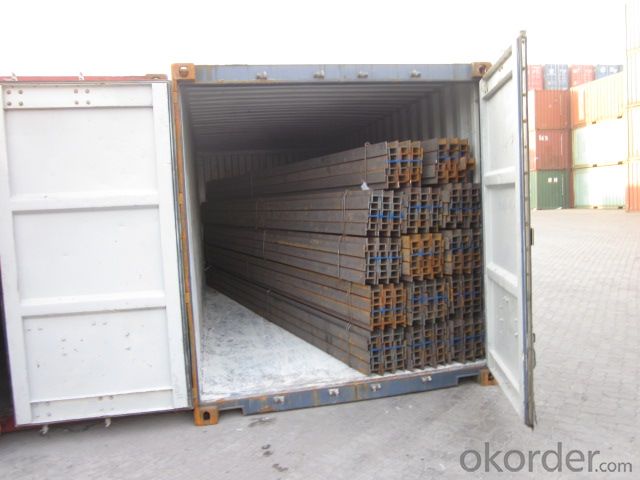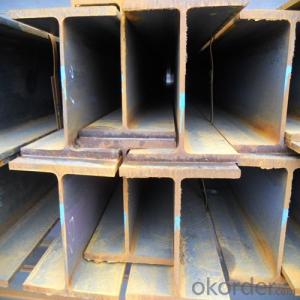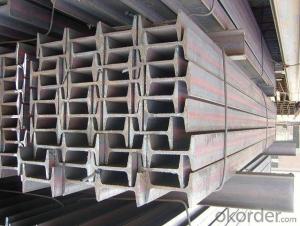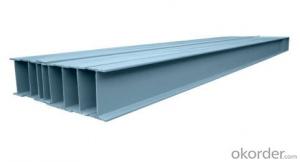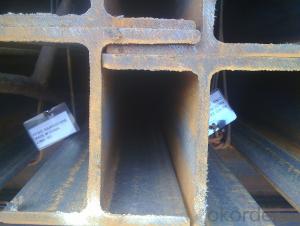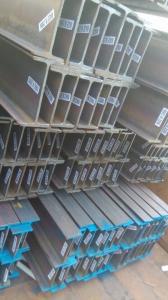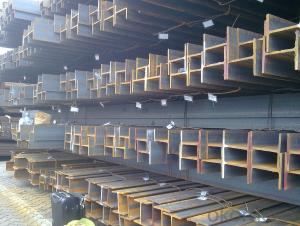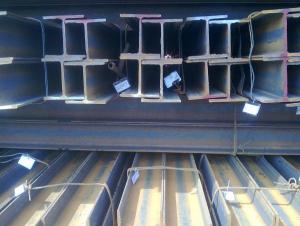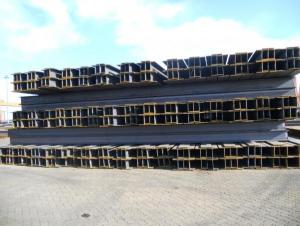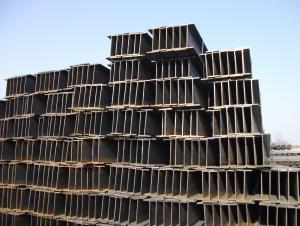Steel H-Beam for Construction with Competitive Prices
- Loading Port:
- China main port
- Payment Terms:
- TT OR LC
- Min Order Qty:
- 250 m.t.
- Supply Capability:
- 20000 m.t./month
OKorder Service Pledge
OKorder Financial Service
You Might Also Like
Specification
Product Description:
Specifications of Steel H-Beam for Construction with Competitive Prices
1. Standard: GB700-88, Q235B2.
2. Grade: Q235, SS400 or Equivalent
3. Length: 6m,10m, 12m as following table
4. Invoicing on theoretical weight or actual weight as customer request
5.Payment: TT or L/C
Usage & Applications of Steel H-Beam for Construction with Competitive Prices
Commercial building structure ;Pre-engineered buildings; Machinery support structure; Prefabricated structure; Medium scale bridges; Ship-building structure. etc.
Packaging & Delivery of Steel H-Beam for Construction with Competitive Prices
1. Packing: it is nude packed in bundles by steel wire rod
2. Bundle weight: not more than 3.5MT for bulk vessel; less than 3 MT for container load
3. Marks:
Color marking: There will be color marking on both end of the bundle for the cargo delivered by bulk vessel. That makes it easily to distinguish at the destination port.
Tag mark: there will be tag mark tied up on the bundles. The information usually including supplier logo and name, product name, made in China, shipping marks and other information request by the customer.
If loading by container the marking is not needed, but we will prepare it as customer request.
4. Transportation: the goods are delivered by truck from mill to loading port, the maximum quantity can be loaded is around 40MTs by each truck. If the order quantity cannot reach the full truck loaded, the transportation cost per ton will be little higher than full load.
5. Delivered by container or bulk vessel
Production flow of Steel H-Beam for Construction with Competitive Prices
Material prepare (billet) —heat up—rough rolling—precision rolling—cooling—packing—storage and transportation
Images
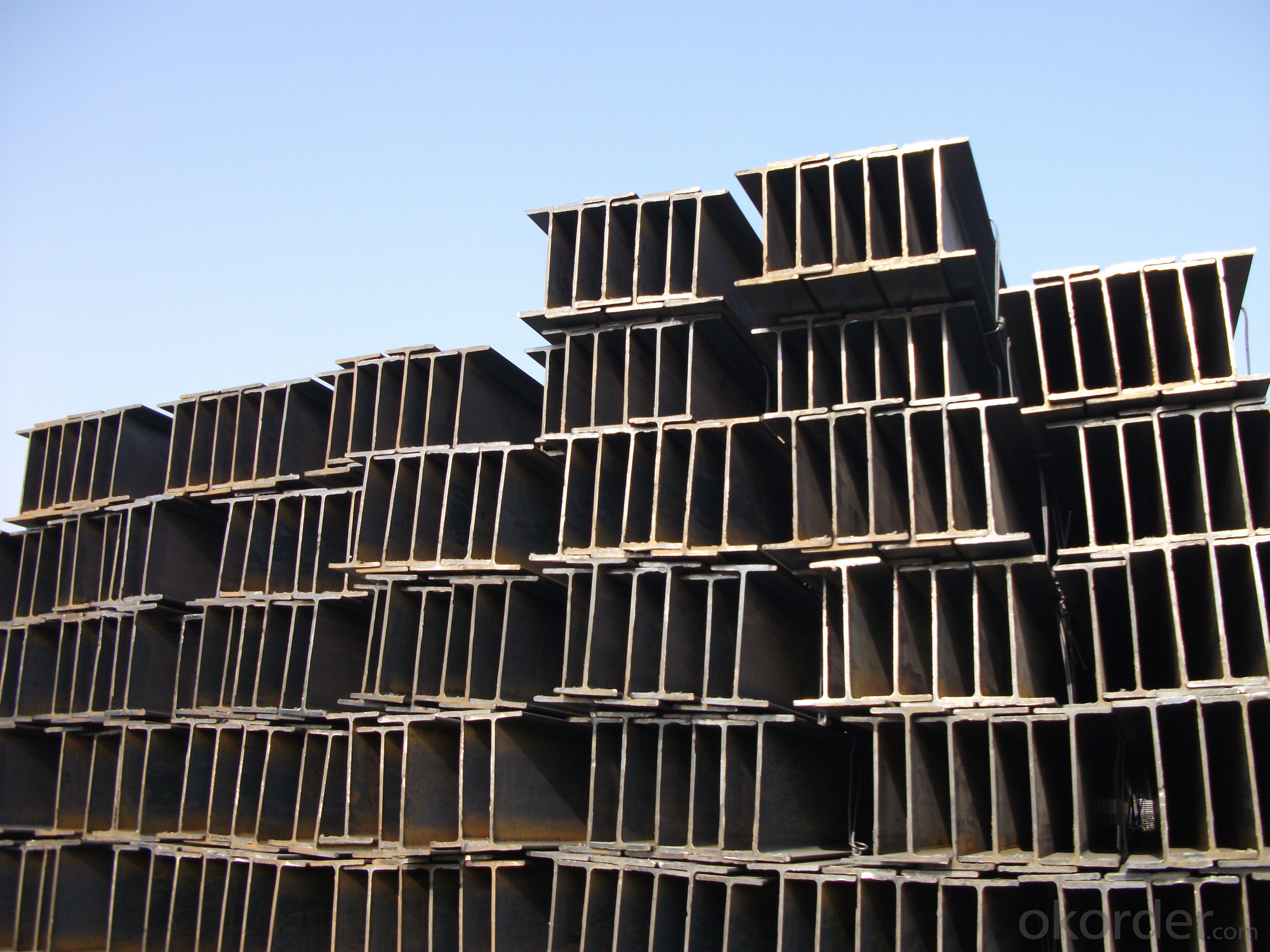
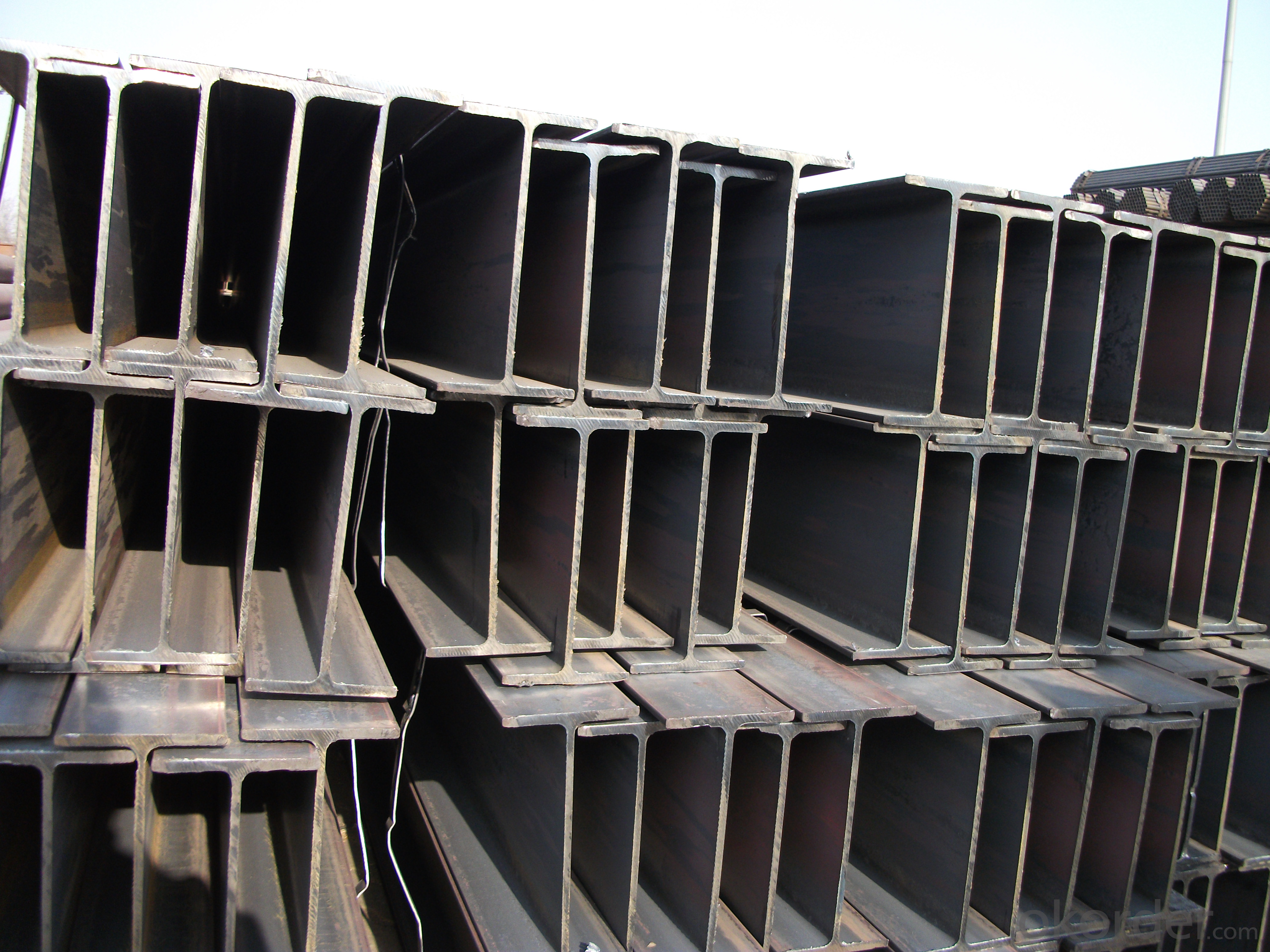
- Q: How do you calculate the maximum bending stress in steel H-beams?
- In order to determine the maximum bending stress in steel H-beams, several factors must be taken into account. Firstly, the maximum bending moment that the H-beam will experience needs to be determined. This can be achieved by analyzing the applied loads on the beam, including dead loads (the weight of the structure itself) and live loads (any additional weight placed on the beam). By calculating the reactions at the supports and summing the moments at any given section of the beam, the maximum bending moment can be established. Next, it is necessary to calculate the section modulus of the H-beam. The section modulus is a geometric property of the beam's cross-section, indicating its resistance to bending. This can be calculated by dividing the moment of inertia of the cross-section by the distance from the centroid of the cross-section to the extreme fiber. The moment of inertia can be found in standard engineering references or by using software programs. Finally, the maximum bending stress can be calculated utilizing the formula σ = M / S, where σ represents the maximum bending stress, M is the maximum bending moment, and S is the section modulus. This formula establishes the relationship between the applied moment and the stress induced in the beam. It is important to emphasize that accurate input data, including correct values for loads, beam dimensions, and material properties, are crucial for calculating the maximum bending stress in steel H-beams. Moreover, it is advisable to consult the applicable design code or standard for any specific requirements or factors that need to be considered.
- Q: What are the typical spans and spacing for steel H-beams in roof structures?
- The spans and spacing for steel H-beams in roof structures can vary depending on factors such as roof design, load requirements, and regional building codes. However, there are some general guidelines to follow. For smaller residential or light commercial roof structures, steel H-beams typically span from 10 to 25 feet. The spacing between beams can range from 4 to 8 feet. In larger commercial or industrial roof structures, the spans can be much greater, exceeding 100 feet. The spacing between beams in these cases is usually between 10 to 20 feet. It is important to remember that these are only general guidelines. A structural engineer or architect should determine the specific requirements for spans and spacing. They will consider factors such as roof material weight, anticipated snow or wind loads, and any building code requirements. Adhering to proper spans and spacing is crucial for ensuring the safety and structural integrity of the roof structure. It is always recommended to consult with a professional to determine the most appropriate spans and spacing for steel H-beams in roof structures.
- Q: Can steel H-beams be used for supporting elevated walkways or platforms?
- Indeed, elevated walkways or platforms can be supported by steel H-beams. In construction, steel H-beams are frequently employed due to their robustness and endurance. Their exceptional load-bearing capacities make them well-suited for sustaining structures like walkways and platforms. The H-shaped configuration of these beams enables superior weight distribution and resistance against bending or twisting forces, guaranteeing stability and safety for elevated constructions. Moreover, steel H-beams can be conveniently fabricated and installed, rendering them a pragmatic selection for such purposes.
- Q: Can steel H-beams be used for residential garages?
- Yes, steel H-beams can be used for residential garages. They are commonly used in construction for their strength and durability, making them suitable for supporting the weight of a garage structure.
- Q: Do steel H-beams require special maintenance?
- Special maintenance is not usually necessary for steel H-beams. Nevertheless, it is recommended to conduct regular inspections and maintenance to guarantee their structural soundness and long lifespan. This entails promptly addressing any signs of corrosion or damage, such as cracks or bends. Furthermore, it is important to keep the H-beams clean and clear of debris or excessive moisture in order to prevent corrosion and maintain their overall state. Ultimately, despite the renowned durability and strength of steel H-beams, regular maintenance is crucial to ensure their ongoing performance and safety.
- Q: What are the different design codes for steel H-beams?
- The different design codes for steel H-beams include the American Institute of Steel Construction (AISC) code, European Standard (EN) code, Japanese Industrial Standards (JIS) code, and the British Standards (BS) code. These codes provide guidelines and specifications for the design, fabrication, and use of steel H-beams in various structural applications.
- Q: Can steel H-beams be used in the construction of military or defense buildings?
- Yes, steel H-beams can be used in the construction of military or defense buildings. Steel H-beams are known for their high strength and durability, making them suitable for structures that require resistance against extreme conditions and potential threats. Additionally, their versatility allows for flexible design and construction options, making them a reliable choice for military and defense-related projects.
- Q: How do steel H-beams perform in mining and industrial facilities?
- Steel H-beams perform exceptionally well in mining and industrial facilities due to their high strength and durability. These beams provide robust structural support, enabling them to withstand heavy loads, vibrations, and harsh conditions commonly found in these environments. Additionally, their versatility allows for easy customization and installation, making them a preferred choice for various applications such as supporting heavy machinery, constructing conveyor systems, and creating overhead cranes. Overall, steel H-beams are reliable and efficient in enhancing the safety and operational efficiency of mining and industrial facilities.
- Q: Are steel H-beams compatible with different construction materials?
- Yes, steel H-beams are compatible with different construction materials. They are widely used in construction projects and can be easily integrated with various materials such as concrete, wood, and even other steel components. The versatility and strength of steel H-beams make them a popular choice for structural support in buildings and bridges.
- Q: What are the welding requirements for steel H-beams?
- The welding requirements for steel H-beams are determined by several factors including the specific steel grade, the thickness of the beams, the type of welding process being used, and the intended application of the beams. Firstly, it is important to select the appropriate steel grade for the H-beams. Commonly used steel grades for H-beams include ASTM A36, ASTM A572, and ASTM A992. These grades have different mechanical properties and welding characteristics, so it is crucial to consult the manufacturer's specifications or relevant welding codes to determine the suitable steel grade for the specific application. Next, the thickness of the H-beams is an important factor that affects the welding requirements. Thicker beams may require preheating before welding to control the cooling rate and minimize the risk of hydrogen-induced cracking. Preheating temperatures and durations should be determined based on the steel grade and thickness, and the specific welding code being followed. The type of welding process being used is another crucial consideration. Common welding processes for H-beams include shielded metal arc welding (SMAW), gas metal arc welding (GMAW), and flux-cored arc welding (FCAW). Each process has its own set of requirements in terms of electrode selection, welding parameters, and post-weld heat treatment. Proper fit-up and joint preparation are also important for achieving high-quality welds on H-beams. The beams should be properly aligned and positioned to ensure full penetration of the weld and minimize distortion. Joint preparation, such as beveling or grinding, may be necessary to achieve appropriate groove dimensions for certain welding processes. Additionally, it is important to consider any specific requirements for post-weld heat treatment or inspection. Some applications may require stress relieving or annealing of the welded H-beams to improve their mechanical properties or reduce residual stresses. Nondestructive testing methods, such as ultrasonic or magnetic particle inspection, may be necessary to ensure the integrity of the welds. Overall, the welding requirements for steel H-beams are dictated by the steel grade, beam thickness, welding process, and application. It is essential to consult relevant welding codes, manufacturer specifications, and engineering professionals to determine the specific welding procedures, parameters, and quality control measures necessary to achieve reliable and structurally sound welds on H-beams.
Send your message to us
Steel H-Beam for Construction with Competitive Prices
- Loading Port:
- China main port
- Payment Terms:
- TT OR LC
- Min Order Qty:
- 250 m.t.
- Supply Capability:
- 20000 m.t./month
OKorder Service Pledge
OKorder Financial Service
Similar products
Hot products
Hot Searches
Related keywords





